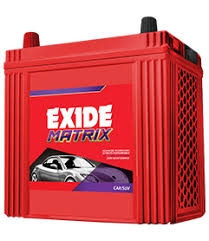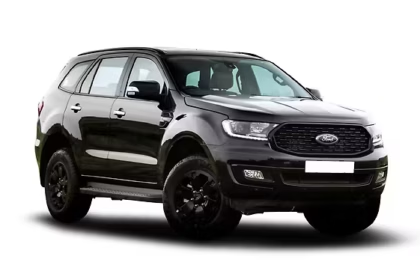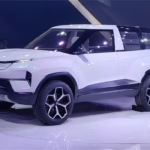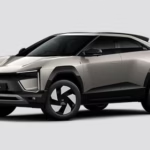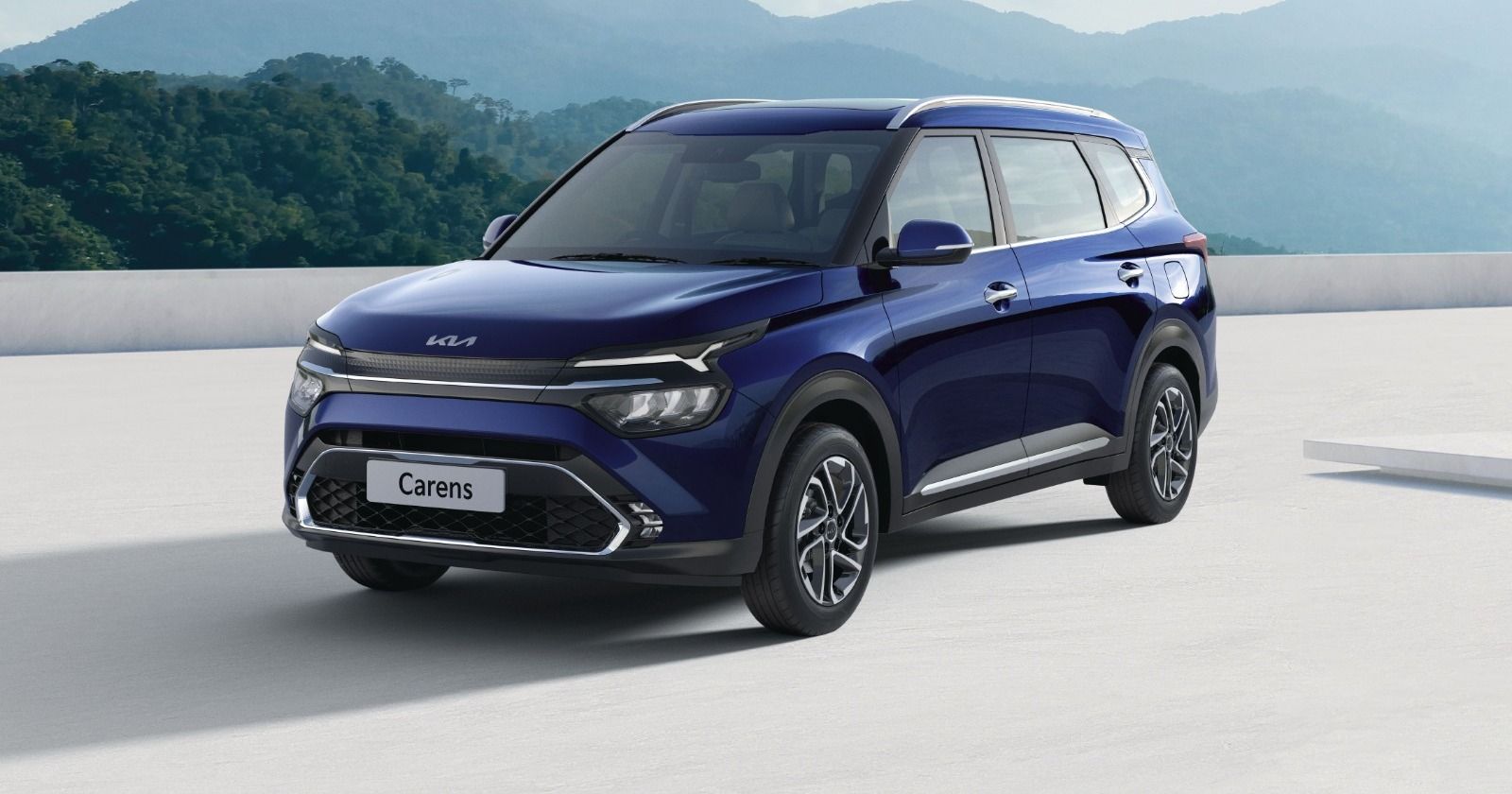Introduction
The flick of a switch, batteries silently power India’s motion and comfort. From roaring highways to quiet homes during power cuts, the Exide battery price heartbeat of modern India runs on stored energy-and in the midst of it all stands Exide, a brand that has been keeping the nation charged for generations.
Exide Industries: A Legacy of Power and Trust
- Exide Industries was founded over seven decades ago and is today India’s most recognised and trusted battery manufacturer, consistently delivering quality and innovation.
- It operates on a large scale, with nine manufacturing plants in India and a growing presence in global markets across Asia, the Middle East, and Africa.
- Over the years, Exide has become synonymous with reliability, especially in sectors where power failure isn’t an option, such as automobiles, telecom, defence, and renewable energy.
- With constant R&D investment and a wide service network, it has become a household name in the energy storage solutions industry.
Powering Every Corner of India’s Energy Needs
- The product portfolio of Exide ranges from car and bike batteries to industrial power solutions, inverters, solar batteries, and electric vehicle (EV) energy packs.
- Exide powers millions of vehicles that define India’s daily commute in cities, while in villages, its inverter and solar batteries keep homes lit during outages.
- The company is increasingly focusing on EV-ready lithium-ion technology, marking a big shift from lead-acid to future-ready solutions.
- Whether it is a premium sedan, an e-scooter, or an inverter in a small town, Exide makes sure India remains charged, connected, and mobile.
Why 2025 is a Pivotal Year for Exide
- The year Exide and India’s battery market, as EV adoption accelerates and lithium-ion manufacturing takes centre stage.
- Ongoing investments in domestic cell manufacturing by Exide, along with its partnerships with global technology leaders, make it one of the frontrunners in India’s green mobility revolution.
- Price trends are shifting: Lead-acid batteries are stabilising, while lithium-based solutions are becoming increasingly affordable to mainstream buyers. Pricing strategy and product innovations by Exide in 2025 will shape how the country moves toward a cleaner, battery-powered future, as these markets —including renewable energy, home backup, and others — continue to grow.
Exide Battery Overview
Before we delve deeper into prices and models, we must first understand what makes Exide more than just a battery brand: it’s an institution in India’s energy ecosystem. Over the decades, Exide has evolved from a simple power storage company to a multi-segment energy powerhouse, supplying solutions for vehicles, homes, and industries, while also being at the forefront of the electric mobility revolution.
A Legacy Rooted in Innovation and Trust
- Exide Industries was established in 1947 and has witnessed India’s growth from the era of petrol engines to the age of electric mobility.
- The headquarters of Exide are located in Kolkata, and the company has a strong presence throughout the country, with over 60,000 dealers and distributors.
The brand has earned its reputation through reliability, long battery life, and wide service coverage.
The Product Spectrum
- From cars, bikes, trucks, and tractors, these batteries are the lifeline of India’s road transport. Market-dominating variants include Exide Mileage, Matrix, Epiq, and Xplore.
Inverter & Home UPS Batteries:
- Homes and small offices across urban and rural India remain lit up with the power of Exide’s Inva Tubular and Instabrite series, even during the longest blackout.
Technology Meets Transformation
- Exide continuously invests in research and development, utilising advanced testing facilities to enhance the efficiency, lifespan, and performance of its batteries.
- The partnership with Leclanché SA, Switzerland, has empowered Exide to step into high-performance lithium-ion technology, which has become imperative for electric scooters, e-rickshaws, and four-wheelers.
- The transition of the brand from traditional lead-acid to smart, connected lithium batteries shapes its identity in 2025 as a next-generation energy leader.
Why Exide Dominates the Indian Market:
- A network that spans urban centres to rural villages, making Exide accessible everywhere.
- Consistent product performance, even under extreme heat, dust, and power fluctuations.
- A strong after-sales support system with nationwide warranty and service coverage.
- A brand legacy trusted by auto giants, industries, and millions of Indian families for decades.
 Exide Battery Price List in India 2025 (Category-Wise)
Exide Battery Price List in India 2025 (Category-Wise)
As of 2025, Exide dominates India’s energy market across a broad spectrum of battery applications, including vehicles, homes, and renewable systems. A transparent and updated category-wise break-up of the price list for Exide batteries in all its major segments is as follows:
Exide Car Battery Price 2025
- Exide’s range of automotive batteries caters to a wide variety of vehicles, from hatchbacks to SUVs, with popular models including Mileage, Matrix, Epiq, and Gold.
- The entry-level 35Ah–45Ah batteries are priced around ₹4,000 – ₹6,000 and are sufficient for compact and mid-size cars.
- High-performance 60Ah–80Ah models for sedans, diesel cars, and SUVs cost from ₹8,000 – ₹13,000.
Exide Bike Battery Price 2025
- For two-wheelers, Exide’s Xplore, Bikerz, and Ride+ series dominate the market.
- Smaller capacity variants, such as 2.5Ah to 5Ah, start at a price of ₹1,000 – ₹1,800, which is sufficient for scooters and commuter bikes.
- Mid-segment batteries with a capacity of 7Ah to 9Ah, designed for performance bikes, fall within a price bracket of ₹2,000 – ₹3,000.
- All the two-wheeler models come with vibration resistance and a spill-proof design for durability on rough Indian roads.
- Standard warranty: 24–48 months, depending on the model.
Exide Inverter Battery Price 2025
- Exide’s inverter batteries manufactured for India’s power conditions include Inva Tubular, Instabrite, Invamaster, and Mega Charge.
- 100Ah–120Ah models are generally priced between ₹10,000 – ₹13,000.
- 150Ah batteries, which are the most common choice for homes, cost between ₹13,000 and ₹16,000.
- Heavy-duty variants of the 200Ah range from ₹20,000 to ₹25,000, considering backup time and technology.
- Tubular inverter batteries are designed for longer life cycles and deep discharge performance, making them best suited for frequent power outages.
Exide Solar Battery Price 2025
- The batteries are designed for off-grid and hybrid solar setups, thus finding wide application in cases of growing renewable adoption.
- 100Ah–150Ah solar batteries cost between ₹12,000 – ₹18,000.
- Higher-capacity 200Ah+ variants can reach ₹20,000 – ₹25,000.
- Constructed to handle daily charge and discharge cycles, they are ideal for both residential rooftops and small commercial setups.
- These batteries are maintenance-friendly, eco-safe, and compatible with most solar inverters.
Factors Affecting Exide Battery Prices
Battery prices fluctuate in response to technological advancements, demand, and global market trends.
- Technology Upgrade
- Exide has invested heavily in the next generation of battery chemistries.
- Exide will have its new lithium-ion cell manufacturing plants in India ramp up production, thereby gradually bringing down prices locally in 2025.
- Increasing EV Adoption and Market Demand
- India’s EV revolution is accelerating, and so is the demand for high-capacity, fast-charging batteries.
- With entry into EV battery manufacturing, Exide will need to balance the mass market’s affordability with the development of premium technology.
- The rising sales of e-scooters, e-rickshaws, and hybrid vehicles have driven demand for both lead-acid and lithium-ion battery variants.
- This surge has created temporary price inflation in the short term, but increased use is likely to stabilise prices by the end of 2025.
- Government Policies and Import Duties
- The Indian government has promoted indigenous production by offering a PLI scheme for advanced battery manufacturing.
- However, the import duty is still factored into the final retail price for battery components, lithium cells, and chemicals.
- With Exide increasingly sourcing more materials domestically and aligning with the ‘Make in India’ initiative, dependence on imports is likely to decrease, thereby stabilising costs over time.
- In addition, subsidies and tax benefits for EVs and renewable batteries play a significant role in making certain Exide models more affordable to the end-users.
- Warranty, Capacity, and Brand Assurance
- Price also varies according to the Ah capacity: the higher the capacity, the higher the cost.
- Longer warranty models, less than 72 months, are more expensive but offer greater value over an extended period.
- Exide’s brand reliability, extensive service network, and rigorous quality testing standards add a slight premium to its pricing compared to local competitors.
- Most people prefer to pay a little more for Exide due to its proven durability and after-sales support.
- Distribution, Transportation & Retail Margins
- The batteries manufactured by Exide are distributed to a widespread network of dealerships located in major cities.
- Logistics costs, particularly for heavy inverters or solar batteries, also contribute to regional price variability.
- The final on-ground selling price can also be altered by 5–10% due to retailer margins, local taxes, and installation charges.
- Online marketplaces sometimes offer discounts, whereas offline stores often include fitting and warranty registration services.
How to Choose the Right Exide Battery
In 2025, Exide will offer dozens of models across vehicles, homes, and EVs, making it crucial to match battery specifications with usage patterns, environment, and budget.
- Identify Your Purpose and Application
- Emphasise the aspects of starting power, cold-cranking amps, and maintenance-free designs.
- Emphasise long backup time, deep discharge capability, and tubular design.
- For EVs, consider lithium-ion packs with high energy density and fast-charging capabilities.
- Select the Right Type of Battery
- Affordable, time-tested, and ideal for car, bike, and home inverters, these batteries require occasional maintenance.
- Sealed design, zero water refilling, suitable for urban users who like low maintenance.
- Used in inverter and solar applications; deep discharge capacity, long life.
Lithium-Ion Batteries:
- Lightweight, fast-charging, and long-lasting, what more could an EV or a high-end energy system want?
AGM (Absorbent Glass Mat) Batteries:
- Advanced sealed batteries for high-end cars and backup systems; ensure stable power delivery.
- Match Capacity with Requirement (Ah Rating)
Ah (Ampere-hour) governs the duration a battery can supply power.
- Small cars/bikes: 2.5Ah–35Ah range.
- Sedans/SUVs: 60Ah–80Ah.
- Home inverter: 100Ah–200Ah.
- Solar/EV systems: 120Ah–150Ah+ or higher.
And, oversized capacity doesn’t mean better. It should be compatible with your consumption and also match your alternator and inverter.
- Consider warranty and backup duration.
- Exide offers warranties ranging from 24 to 72 months, depending on the product line.
- Generally, longer warranties reflect better battery chemistry and endurance.
- Inverters and solar batteries specify “Backup hours” – typically 3-8 hours, depending on usage.
- Always compare both cost per amp-hour and warranty length to find the best value.
- Authenticity and Manufacturing Date Verification
- Look for the Exide hologram, serial number, and official package to avoid counterfeit products.
- Check the date of manufacture; newer is always better, considering that battery life starts from the date of manufacturing, not from the date of purchase.
- This entails purchasing from authorised dealerships or verified online partners that can offer installation and warranty registration services.
- Maintenance and Usage Habits
- For lead-acid batteries, it is recommended to check the water levels every 2–3 months.
- Terminals should be kept clean, tight, and free of corrosion.
- Avoid deep discharges — recharge inverter batteries before they reach a dangerously low level.
Latest Updates from Exide
2025 is turning out to be a landmark year for Exide Industries, a year where tradition meets transformation. It is now poised to redefine what it means to be an energy brand in the era of electric vehicles.
From Kolkata headquarters to new-generation factories in Bengaluru, Exide has moved far beyond being a “battery company.” It is emerging as a full-scale leader in energy technology, poised to fuel India’s electric future.
- India’s First Lithium-Ion Gigafactory Launched
- While the biggest leap forward for Exide in 2025 is the construction of a giant lithium-ion battery plant in Bengaluru, the facility is operated through its subsidiary, Exide Energy Solutions Ltd.
- It has an initial capacity of approximately 6 GWh, which can be scaled to 12 GWh over time.
- This marks the beginning of large-scale domestic production of lithium cells, which will reduce India’s dependence on imports and lower the cost of EV batteries.
- Dual-Focus Strategy: Lead-Acid and Lithium-Ion
- Exide has not abandoned its roots; instead, it operates a dual-track business model.
- On one side, it is dominating the lead-acid battery market for cars, bikes, inverters, and solar installations.
- On the other hand, it is investing heavily in the latest lithium-ion cells for EVs and renewable energy systems.
- This balanced approach keeps Exide relevant both in today’s traditional market and the electric ecosystem of tomorrow.
- New Partnerships with EV Giants
- Exide, in 2025, is an active collaborator with several electric vehicle makers within the country to provide locally manufactured lithium battery packs.
- These include partnerships with both four-wheeler and two-wheeler EV makers, focusing on safe, high-density LFP cells (Lithium Iron Phosphate) – a chemistry known for being very durable and safe in Indian conditions.
- This move makes Exide one of the few Indian brands that contribute directly to the country’s EV supply chain.
- Push Toward Innovation and Automation
- Exide’s new plants and R&D centres are being upgraded with Industry 4.0 technologies, including automation, data analytics, and AI-based quality control.
- Every new battery released in 2025 is smarter, safer, and more efficient than those that came before it.
- The company is further investing in recycling and sustainability measures, offering a closed-loop system for used batteries and minimising waste to the environment.
- Export Expansion and Global Footprint
- Exide is also scaling its export business, supplying batteries to Southeast Asia, Africa, and the Middle East.
- By integrating Indian manufacturing excellence with global technology standards, Exide aims to make India a leading global battery export hub within the next few years.
- A well-defined long-term vision that encompasses not only being a domestic leader but also a globally renowned name in clean energy storage defines the company.
- Price and Market Impact
- These are the latest innovations that will reshape Exide’s product lineup and pricing strategy for 2025.
- Lead-acid batteries are stable and inexpensive for classic cars and inverter systems.
- While more expensive, lithium-ion batteries are now offering improved longevity and faster charging, making them ideal for premium users and EV adopters.
- With increasing domestic production, prices are expected to fall gradually, making such advanced batteries more affordable for Indian consumers.
Maintenance & Longevity Tips
It’s not just the technology behind the battery, but also the daily way you handle it that decides a battery’s life. Whether it’s the lead-acid battery of your car or inverter, or the lithium-ion pack powering your EV or solar setup, proper maintenance is the key to long-lasting performance. Here’s how to make your Exide battery last years longer.
- For Lead-Acid Batteries (Car, Bike, Inverter, Solar)
- Keep Terminals Clean and Tight
- Regularly check battery terminals for dust, corrosion, or loose fittings.
- Clean gently with a baking soda and water solution, and tighten the connections securely.
Check Electrolyte Levels (for non-sealed types)
- Check the electrolyte level every 2–3 months by opening the caps and ensuring it is above the marked line.
- Top up only with distilled water — never tap water.
Store in a Well-Ventilated, Cool Place
- Heat speeds up wear and evaporation.
- Ensure your inverter or battery area has proper airflow and shade.
Use It Regularly
- Batteries love action. If not used, charge and discharge the plates once a month to keep them active.
- Lithium-Ion Batteries for EVs, Solar, Smart Backup Systems
Avoid Overcharging
- Most modern Exide lithium systems have built-in BMS, but it is always better to unplug once fully charged.
- Continuous overcharging stresses the cells and reduces long-term capacity.
Maintain Partial Charge Levels
- Unlike lead-acid batteries, lithium batteries prefer to stay between 20% and 80% charged.
- Avoid letting it drain to zero or being at 100% for too long.
Store at Moderate Temperatures
- The ideal temperature for this crop is 20°C to 30°C.
- Cell chemistry can be degraded by extreme heat or cold.
Use Original Chargers and Compatible Systems
- Always use Exide-recommended chargers or systems that have the correct voltage and current rating.
- Cheap third-party chargers can damage the cells or void the warranty.
Update Firmware (for smart batteries)
- Certain Exide lithium batteries have smart modules or apps; ensure the firmware is updated for improved performance and safety.
- Pro-Level Battery Care Tips
- Install Voltage Stabilisers: Inverter batteries are protected from voltage spikes.
- Check Alternator Output: Car owners should ensure their alternators are functioning properly; undercharging and overcharging can damage batteries.
- Installation Dates for Labels: Helps monitor performance and schedule replacements at appropriate times.
- Use Smart Battery Monitors: Now, some Exide models can track voltage, temperature, and health insights with IoT tracking.
Competitor Comparison
The year 2025 brings a refreshed lineup of Exide batteries across every category — from small two-wheelers to heavy-duty inverters and EVs.
Conclusion
Exide’s 2025 lineup proves why it remains India’s most trusted battery brand, powering every corner of the country’s energy needs, from cars and bikes to inverters and EVs.
As India races towards electrification, Exide is changing too, investing in lithium, smart technology, and green energy. Better performance, longer life, cleaner power-all that a buyer will get at the right price.

